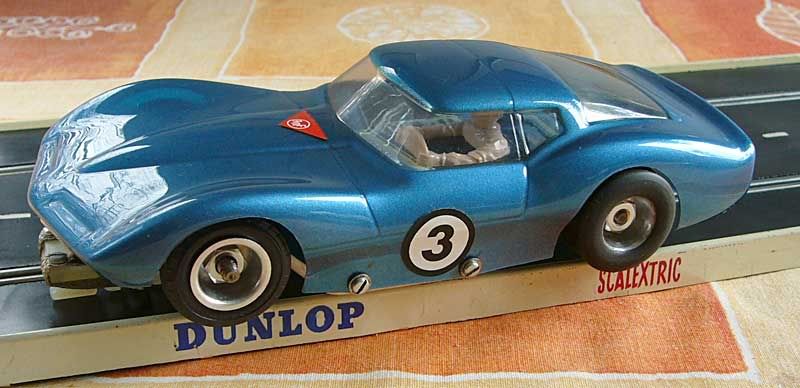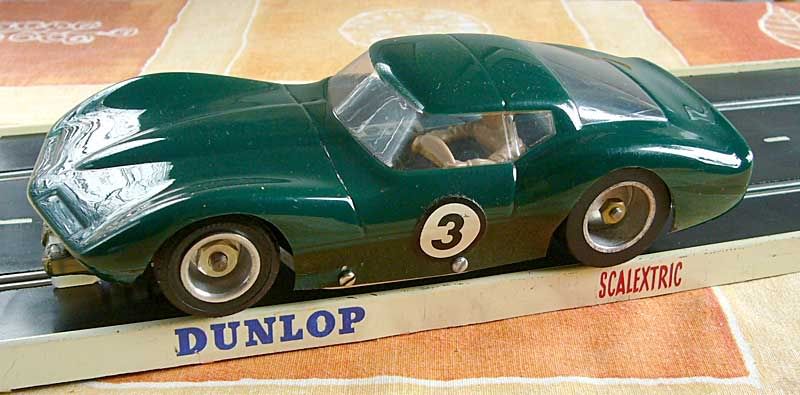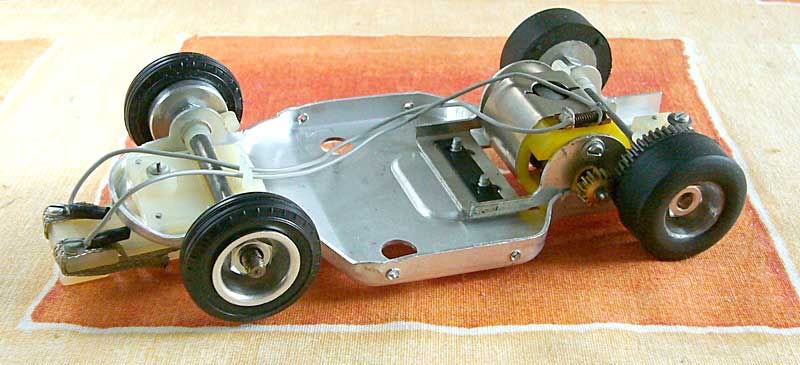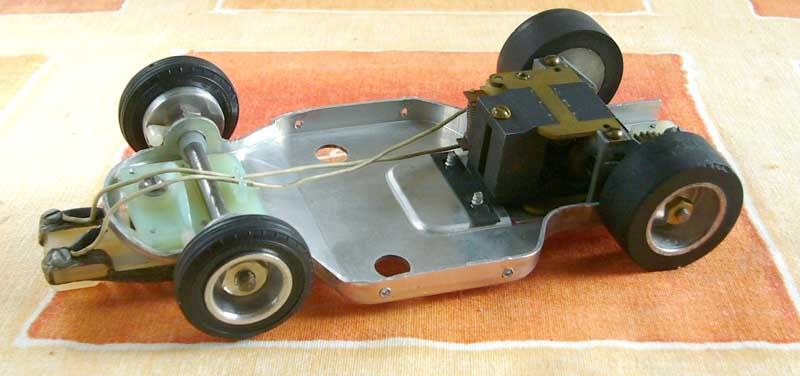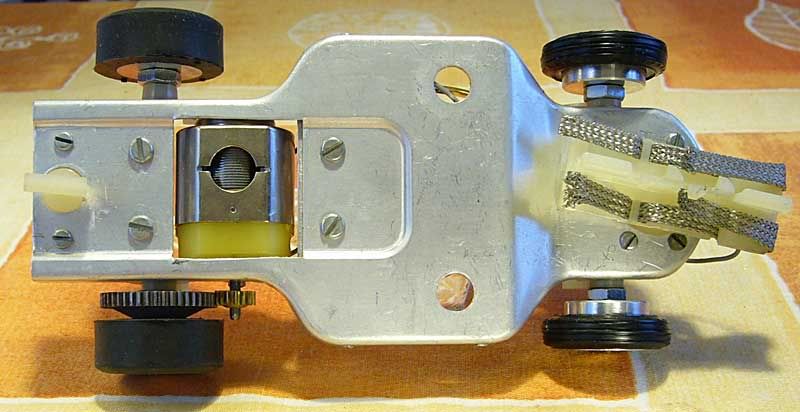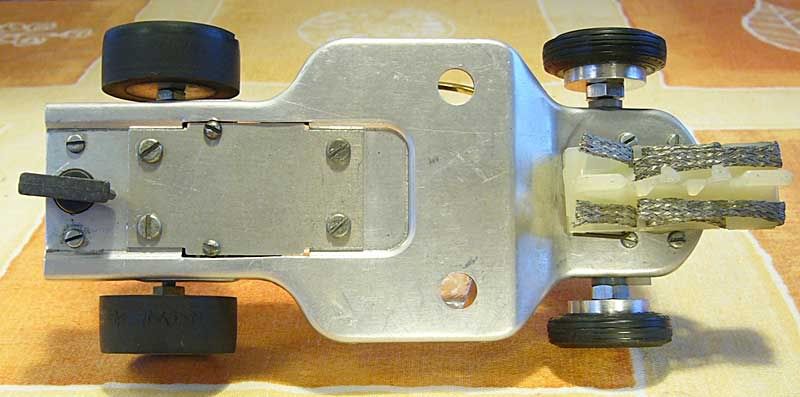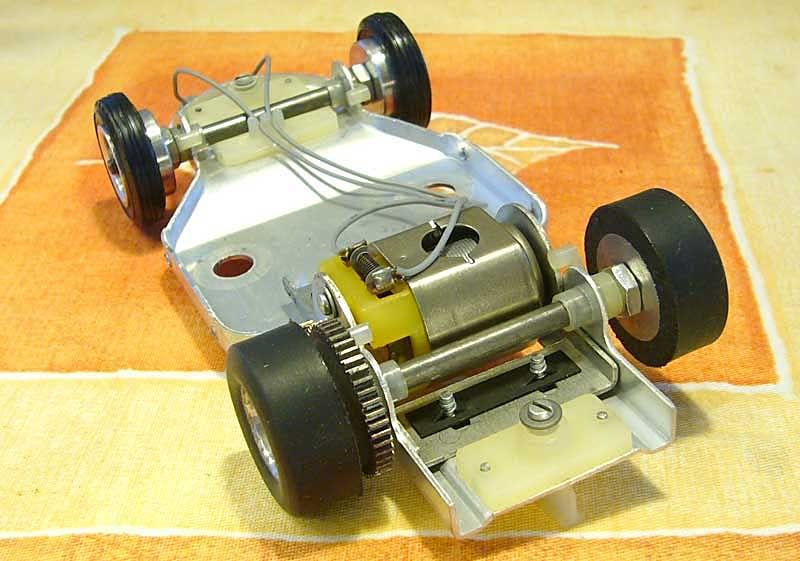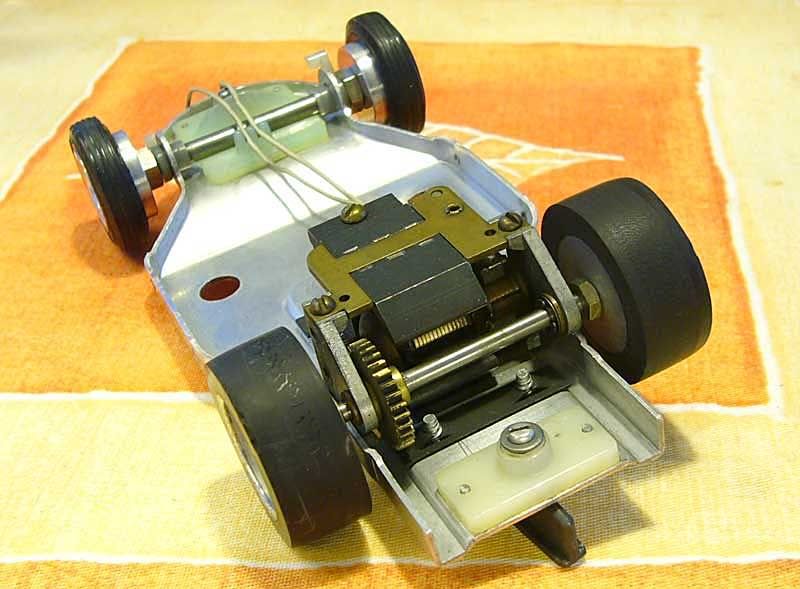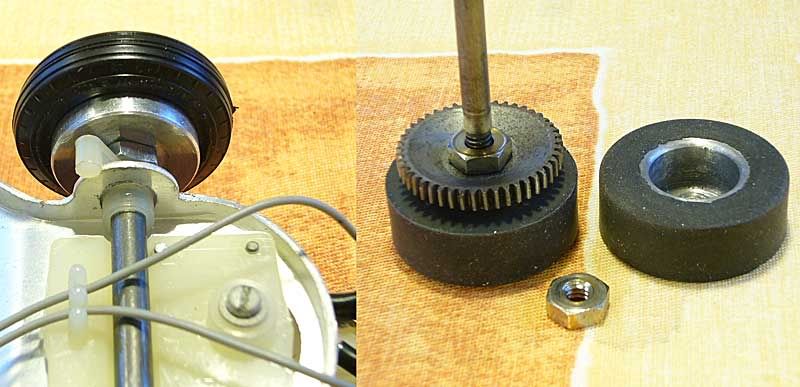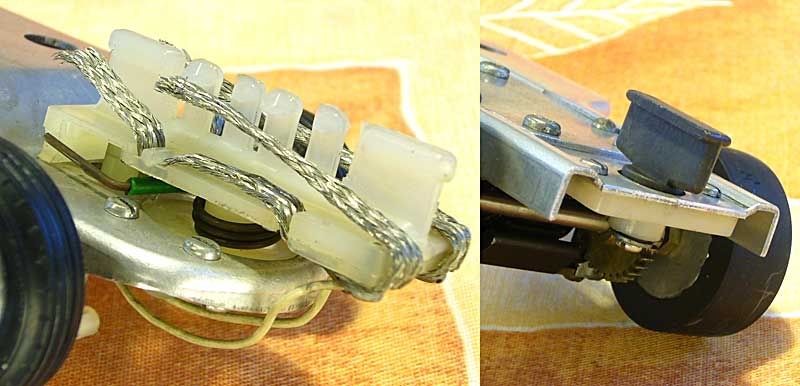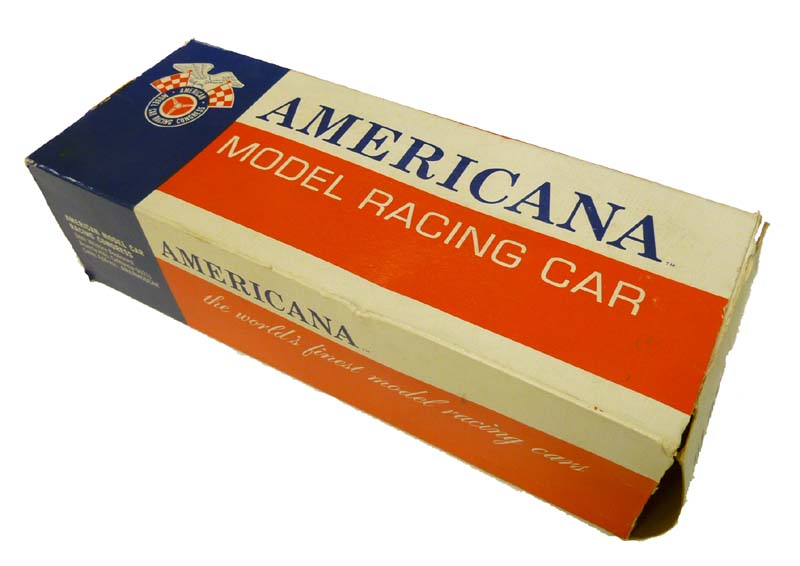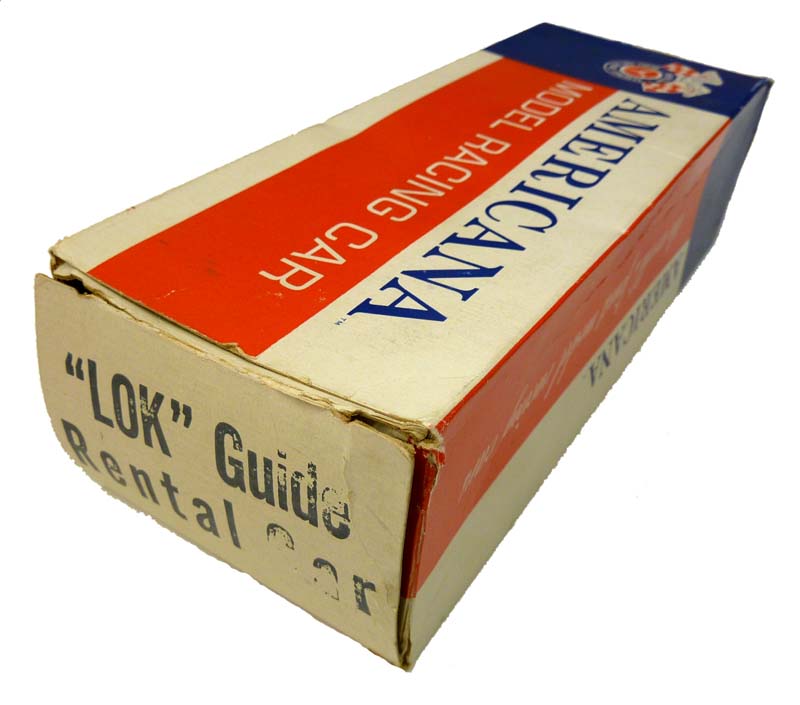Pure fantasy in my book, AMF never purchased AMRRC, it simply... created it.
To quote a qualified person who was there, here is an excerpt from Champion's Ray Gardner's brief history of the hobby:
AMF first produced arcade games as commercial slot racing was not quite on the map yet. Here is an example of their two known efforts:In 1962, former engineers and employees of AMF (American Machine and Foundry - makers of bowling alley pin-setting equipment) formed a company in California named "American Model Raceways and Racing Congress."
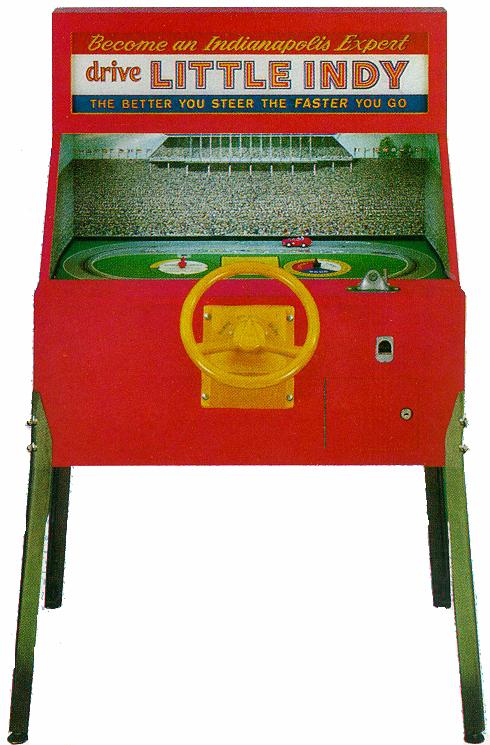
(Picture courtesy of pinrepair.com)
AMF went further and actually developed what they claimed to be as many others, the "Fastest, Best-Handling, Indestructable" slot car, to be used on their tracks. Indeed, all genuine AMF/AMRRC tracks had a T-shaped slot so as to allow the specially-designed guide to hook at the bottom of the slot, in such a way that when the tracks were new and before the slot was worn to a much larger width, those cars had to be inserted in a special place at the beginning of the front straight.With their years of skill and experience, they designed and manufactured 8-lane commercial tracks that were sold to raceways all over the globe. The tracks were quite unique, well ahead of their time, yet quite expensive.
But they went far beyond just building slot tracks. They formulated a complete business plan and produced thick manuals on all phases of the operation. The track layouts were named using English "royalty" and distinctive in that the thick, Formica-covered side walls were all in different colors - Red, Yellow, Green, Black, Orange, Purple, and finally Blue. The color and the name became synonymous and anyone who raced regularly knew what the track was by naming either. For example, the "Orange" was called the "Monarch" and had 8 lanes of 100’ each. The Red was the "Imperial" and was 150’ per lane. The "Sovereign" was American’s "biggie" - a 220’ dream which ultimately became known as the "Purple Mile."

So AMF commissioned MPC, a relatively new company in Mount Clemens, MI, to manufacture a specific car for use on their new tracks, and there was born the heftiest commercial-raceway slot car ever produced this side of the Adams & Sons pile of parts. Sold in a clear plastic box, the thing weighed over 10 ounces, with massive 3/16" axles, heavy-duty wheels and a vacuum-formed Mako Shark body that was made of "Lexan" polycarbonate, the first use of such material on a racing car of any kind, large or small, that is until GM's Don Gates fitted sliding skirts of the same stuff on the 1969 Chaparral 2J.

The huge front guide had no less than three sets of brushes, guaranteeing good contact for a long period of time, or so goes the story anyway. A rear guide was also fitted on some cars so as to elimine spins caused by the poor traction of the supplied silicone tires once the track surface had gotten dusty. The tilt factor was held under control by the T-guide and general heft, let alone the lack of speed as the large MPC motor could hardly cope with the weight of that brick.

The cars were dubbed "International" but only this single American model was ever produced, in many different shades of colors.

The car was supplied with a conventional guide for "other" tracks, to be customer-fitted.
These cars were controlled through a steering wheel and a "gas" pedal, the operator being seated in a comfortable palstic chair made of polyester resin and glass fibers, mounted on a chromed steel tubular structure. The steering was simply an electrical switch interrupting the current to flow if not turned at the proper degree in each curve. The loud pedal actually fed the juice. It simply did not work very well and most people were confused by a system that was simply a lie in its actual functions.
I believe that the only such remaining operating track is the AMRRC "Black" at Buzzarama in Brooklyn, NY.

This system was quickly discarded by track owners, to be replaced by a simple hand-held speed controller.
The lifespan of AMRRC and its AMF involvement was racer-brief, by 1967, they were gone. The legend in which "all AMF tracks were shipped to Europe" was largely disproved, most AMF tracks simply fell victims of their own deficient design and were either rebuilt without humps and hills, or simply became firewood. To disprove the story, Buzzarama has no less than six original, near-mint AMF tracks in their store.
All pictures copyright Electric Dreams 2006-2007
No reproduction of such for any commercial use is allowed.















